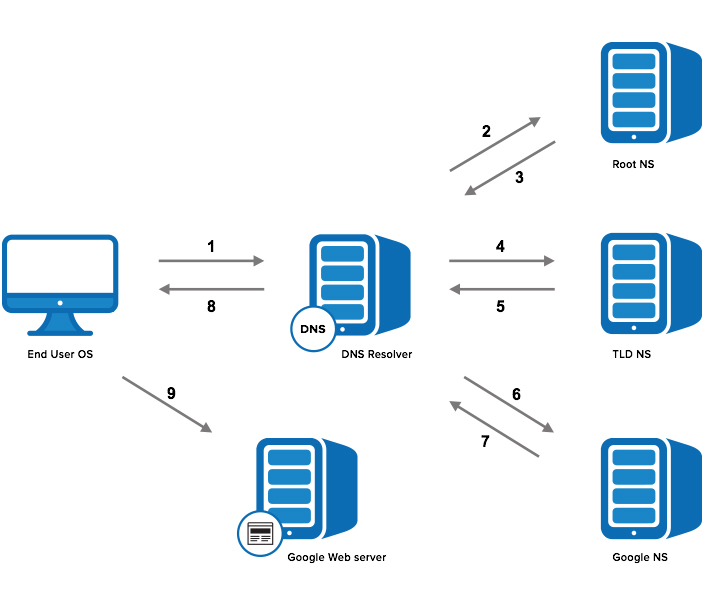You might have heard the word “DNS” many times before and wondered what it exactly means? what does it do? How does it work? OK then, you are in the right place.
Every one of us should be aware of DNS because we have been using it each and every time we browse the internet. Without DNS internet wouldn’t have been this successful.

Every website on the internet has a specific IP address. Any browser of Android or PC can access a website only if it has the IP address of that website. But we never know any IP address and can still access the website, right? Yeah, that’s where the DNS comes to play.
Domain Name Servers are a bunch of servers that maintain a directory of domain names and their IP address. DNS translates the domain name to IP address and returns it to the browser.
When a domain name(google.com) is entered into a browser, the browser access the DNS for IP address of the website(google.com). DNS responds to the request with IP address of the requested website. Now with IP address available, the browser can access the website.
Simply this is how you’re making use of DNS on your Android, PC or Mac. If you want to know exactly how it works then read complete article.
How DNS works detail
The browser requests the DNS for the IP address of a website and access the website if it gets the reply. That’s it? is it that simple? No, there is a whole bunch of process(steps) involved. We will explain you in detail.
Step-1
When a browser is requested to access a web page, the first thing it does is checking its cache memory for the IP address. If you had previously visited the website then the browser would have stored the IP address in its cache memory. So now it will be a lot easier for the browser to get the IP address of the website.
But what if you didn’t access the website in the past?
Step-2
If the browser didn’t get the IP address in its cache then it will access the DNS resolver. DNS resolver is your ISP(Internet service provider).
DNS resolver checks its cache for the IP address and returns it to your browser if found. If the IP address is not in the resolver server then step3 happens.
Step-3
If resolver server didn’t find IP address in its cache then it will access the Root Server. Root Server doesn’t know any IP address but does know where to find them. If the request is for .com or .net domain then Root Server redirects resolver server request to TLD(Top Level Domain) name server.

Step-4
Even TLD name server doesn’t know the IP address but does know exactly where to find them. TLD name server redirects resolver server to AUTHORITATIVE name servers.
Authoritative name server knows the IP address of the requested website. It returns IP address to resolver server. The resolver server returns the IP address to OS(Operating System). OS gives it to the browser. Now the browser has what it requires, so it can access the website.
This complete process seems pretty complex but happens in a fraction of seconds. Every time you use the browser all this complex process happens in the background.
